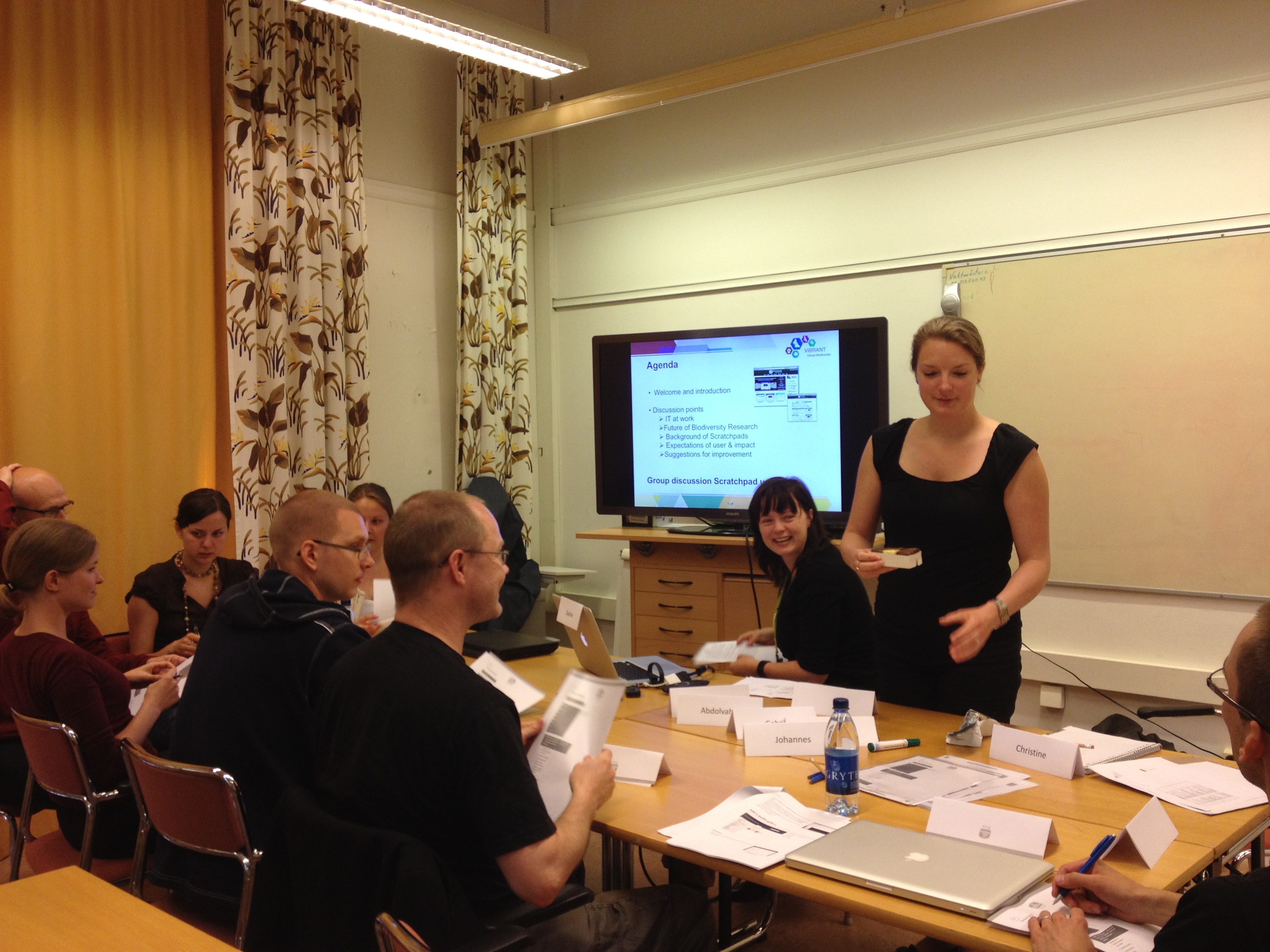Sociology
Peter van den Besselaar & Daphne Duin (VU)
Objective
|
KEY RESOURCES |
|---|
| "Studying the effects of virtual biodiversity research infrastructures." {ZooKeys} 150 (2011): 193-210. http://dx.doi.org/10.3897/zookeys.150.2164 |
| "Identifying Audiences of E-Infrastructures - Tools for Measuring Impact." PLoS ONE 7, no. 12 (2012). http://www.plosone.org/article/info%3Adoi%2F10.1371%2Fjournal.pone.0050943 |
The adoption of an infrastructure requires that it meets the needs and established practices in scholarly communication of relevant (current and potential) users.
Approach
We have explored several approaches:
-
collection of electronic user and use data of the Scratchpads (user logs);
-
refinement of the bibliometric map taxonomy and biodiversity research;
-
scan developments of new forms of publication and research communication;
-
a pilot study to test the feasibility of electronic data for studying users of Scratchpads (Migration to the web).
User logs
The access logs of information systems such as Scratchpads hold interesting behavioural information on its users. Currently the Scratchpad access logs are stored on the NHM server, separately for each site. We have taken a snapshot of these logs and integrated them in a single anonymised database, making it possible to study more complex network activities of users. For instance their activities across Scratchpads, or to collect information on Scratchpad activity per institution or per country. The database will help, among other things, to identify power-users who could then be approached for the Ambassadors programme.
Bibliometric map
In order to map the potential users community of the ViBRANT infrastructure, an initial bibliometric map was made of the fields of taxonomy and biodiversity research. Although the Web of Knowledge data we used do not cover the total output of the field, it may provide us with a reliable estimate of the size and composition of the relevant community. Knowledgeable representatives of the field were consulted and we are currently working on the second, refined version, taking into account feedback received.
New forms of publication
A scan of broader science policy issues around e-infrastructures was initiated that will lead to a report next year. Among others, the adoption of e-infrastructures crucially depends on the way (i) data sharing, tool building and open access publishing are taken into account in research evaluation, and (ii) e-infrastructures and open access publishing can develop sustainable business models.
Migration to the web
A pilot study that made use of the available user and use data of Scratchpad users held electronically was undertaken because the research environment of scholars is increasingly web-based, so it has become urgent to study the effects on research practices, scholarly output and innovation of moving science to the Web. A theoretical framework and a methodology to study these effects has been proposed. Theory and method were applied on an online community in biodiversity research, to demonstrate the feasibility of the approach. Also the practical relevance of this kind of analysis for improving the quality of virtual research environments has been highlighted.
In the pilot study two research questions were addressed by asking whether Scratchpad membership: i) connects people that were otherwise not connected; ii) provide network conditions that are beneficial for the creation of new knowledge and conditions for stability, that is, does the Scratchpad link researchers from different but not too different fields?
Initial results suggest that through computing of relatively simple graphs we get a better understanding of the effects of Scratchpad membership on scholarly networks. Thus we can compare characteristics of Scratchpad networks with e.g. co-authors. Our analysis suggests that Scratchpads do create links between researchers that do not exist in the co-author network and therefore fill structural holes in the network. This is one of the enabling conditions for the creation of new knowledge.

Graph of co-author ties between members of the Scratchpadlivingcreators.info (for privacy fictional name) (2001-2010). 5850. Red: Scratchpad members. Blue: authors that are not in the Scratchpad. Red circles: non-members that co-author with more than one Scratchpad member.
Analysing the number of shared co-authors among members of typical Scratchpad indicates that the members form a loosely collaborating group of researchers. However, if we also take into consideration the collaboration between the members, the network seems denser. Some Scratchpad members were already collaborating before joining the Scratchpad, however most co-author relations are from outside the Scratchpad community. In other words, the Scratchpad partly reinforce extant relationships, but also creates new links for those members that were not included in the co-author network.
Our initial study shows that the selected approach is promising. In the next phase we will extend the study in several ways. Firstly, we used data on only one Scratchpad. We plan to repeat the analysis for a large set of Scratchpads, which will enable us to test whether the level of variety correlates with knowledge production and innovation, as the theory suggests. Secondly, in the current pilot study we treated all co-author relations as having the same importance, which does not reflect real world relationships particularly well. This is also something to take into account in future research. Thirdly, we used only two different networks of the researchers (Scratchpads; co-authorships) while neglecting many others, such as organisational proximity, professor-student relations, project membership and scientific speciality. In order to get the full picture of the role of Scratchpads in scholarly networks, the analysis should be extended with the kind of networks mentioned. Fourthly, it is crucial to compare Scratchpad members with non-members, in order to test whether changes in research practice and performance of members are different from eventual changes in the field at large. Finally, the Scratchpad we studied in this paper was launched in 2011. In order to assess the effects of the deployment of virtual environments, we suggest using a longitudinal research approach: have co-author networks and the thematic orientation of Scratchpads users changed over time, and is this change different from other researchers in the fie
|
These questions are not only theoretical relevant, but may also be useful in the practice of organising Scratchpads and other virtual research environments. It may also help to identify potential interesting new Scratchpad members that might be actively invited to participate. Moreover, these lines of research could contribute to sustain user engagement and to general research infrastructure policy. More generally, the results of the activities in this task aim to inform design, management and evaluation of e-infrastructures.
Interviews are carried out by the VU to update the Scratchpad team on the |
 |
|







